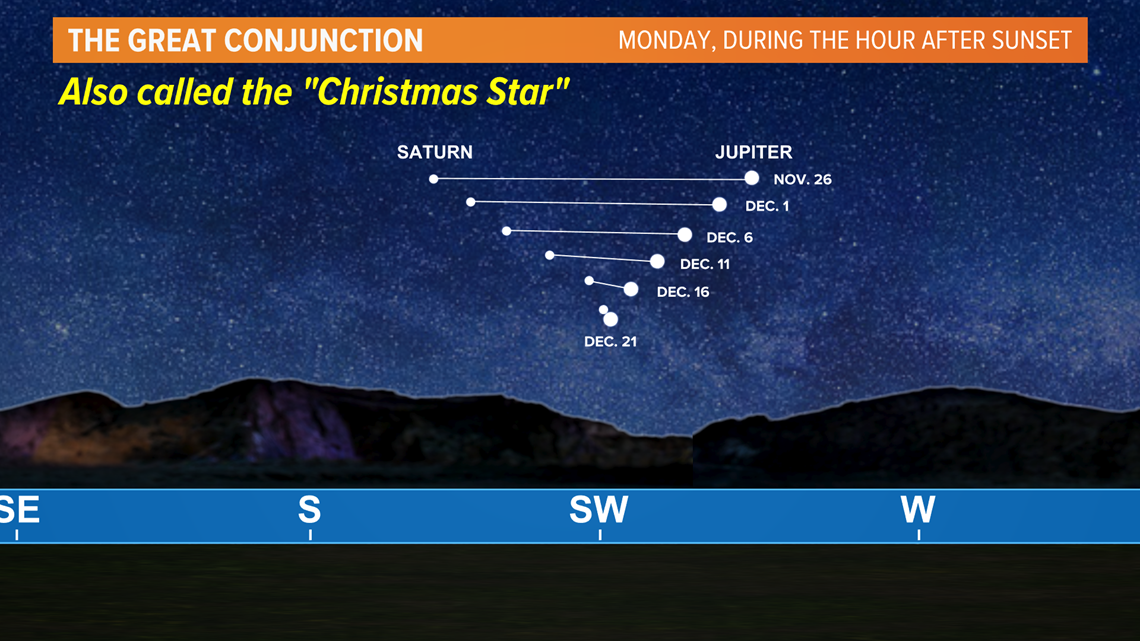NORFOLK, Va. — Right on time to kick off the Christmas week, the "Christmas Star" as it's been called, will be visible Monday night and could be something fun for the whole family to see just after sunset.
It's not actually one star or even a star at all, it's Jupiter and Saturn appearing very close in the sky as one bright spot of light in the southwest sky.
Over the past couple of weeks the bright planets Jupiter and Saturn have been getting closer together, and very visible on a clear night, too. But, on Monday night, the night of the Winter Solstice, they'll be closely aligned for the 'Great' Conjunction. The planets will look like they're nearly merging as one, but in reality, they're still millions of miles away.


According to NASA, what makes this conjunction so rare is that it's been nearly 400 years since these two planets passed this close to each other, but even longer -- almost 800 years -- since they passed this close at night.
It seems like perfect timing that the conjunction is coinciding with the week of Christmas while also falling on the first day of Winter, but that's merely just a coincidence and almost perfect timing.
HOW TO SEE IT?
The "Christmas Star" will be easy to spot in the sky. Look southwest in the hour after sunset Monday night. Sunset is at 5:09 P.M. Look for Jupiter to be the brightest light with Saturn just atop of it to the right. It likely won't look like one big star, but rather like a big area of light in the sky. You should be able to see two distinct planets with the naked eye, but a good pair of binoculars or a telescope could make the detail of the planets easier to see.
FORECAST:
Late afternoon and early evening skies should be partly cloudy to mainly clear. We are hoping for some clearing in the southwest sky so we can see the "Great Conjunction" between Jupiter and Saturn, which is very likely for the Hampton Roads area and parts of northeastern North Carolina. This is also sometimes called the "Christmas Star." The two planets will be very close to each other, essentially appearing as one bright shining body in the sky. It will be visible during the first hour after sunset and then will slip below the horizon. Go, look up!

